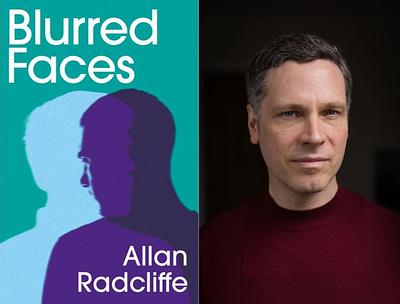Looking for all Articles by Allan Radcliffe?
How to finish the 'difficult second novel'
As his second book approaches publication, author and former New Writers Awardee Allan Radcliffe shares his experiences and tips for tackling that notoriously difficult second novel.

November is not generally considered the most exciting of months. Sandwiched between Halloween and Christmas, the penultimate month of the year can feel like the calm before the storm; the annual breather before the frenzy of shopping, party-going and overeating gets underway.
As it happens, I won’t be resting on my laurels this November, as I’m about to publish my second novel. Blurred Faces, from Fairlight Books, follows the fortunes of two men who meet on a dating app, only for one of them to realise that he bullied the other when they were both children. The story is told through overlapping, sometimes conflicting, monologues that alternate between the protagonists.
Tackling the second novel
I’m well aware of the idea of the 'difficult second novel'. It’s something that people have raised with me in the run up to publication. I have wondered if the phrase, with its implication that writers expend their creative force on book number one, gets trotted out with such frequency – fuelling a certain degree of anxiety and negative expectation – that it becomes a self-fulfilling prophecy.
In my view, the writing process, from conception through rounds of edits to final polish, is always challenging. Although writing my debut novel, The Old Haunts, differed in some ways from the process of writing my second book, time and experience have only served to reinforce the lessons I’ve learned over years of writing and trying to get published.
Forgiving a messy first draft
Chief among these lessons, and still the piece of writing advice that I would most readily share with anyone who asks, is the importance of authors forgiving themselves for their first drafts. This may sound obvious. Unless you are possessed of inordinate self-delusion coupled with huge sway within the publishing industry, there is no way that you would want – or that your editor would allow – your unprocessed thoughts to be seen by the reading public.
Still, I have found – and I don’t think I’m alone in this – that my sense of dread at the prospect of having to sort through the mess of a first draft has at times been so overwhelming that it has stopped me from sitting down and starting. Having been a journalist for many years, I’m trained to write relatively short pieces in a tight timeframe. There is, in that world, a process of editing and ramping up, but everything has to be done quickly, without the luxury of procrastination. Anyone who has tried to write a novel knows that the process is a marathon rather than a sprint. I’m definitely more accustomed to literary sprinting than long-distance efforts.
At root, this 'first-draft phobia' is a fear of failure. What if the manuscript remains a mess? What if the writing process reveals the whole project to be a dud?
Tune out the negative voices
With time, I’ve learned to tune out those nagging internal voices. It helps that there are manifold examples of writers who have struggled with their fear of first drafts and broken through to the other side, from the Orange Prize winner Andrea Levy, who wrote longhand in her local library, and described her initial efforts as 'the meanderings of an idiot’s mind', to the American novelist Anne Lamott, who wrote, 'Let it pour out of you and onto the page. Write an incredibly self-indulgent, whiny, mewling first draft. Then take out as many of the excesses as you can.'
This is wise counsel indeed from Lamott, to be ranked alongside Samuel Beckett’s 'Ever tried. Ever failed. No matter. Try again. Fail again. Fail better.' Which is in itself a succinct mantra for how to approach that dreaded blank page.
.jpg)
Find out about Allan's upcoming events and writing on his website(this link will open in a new window) or check out Blurred Faces(this link will open in a new window) now.
Author photo by Ditte Solgaard Dunn